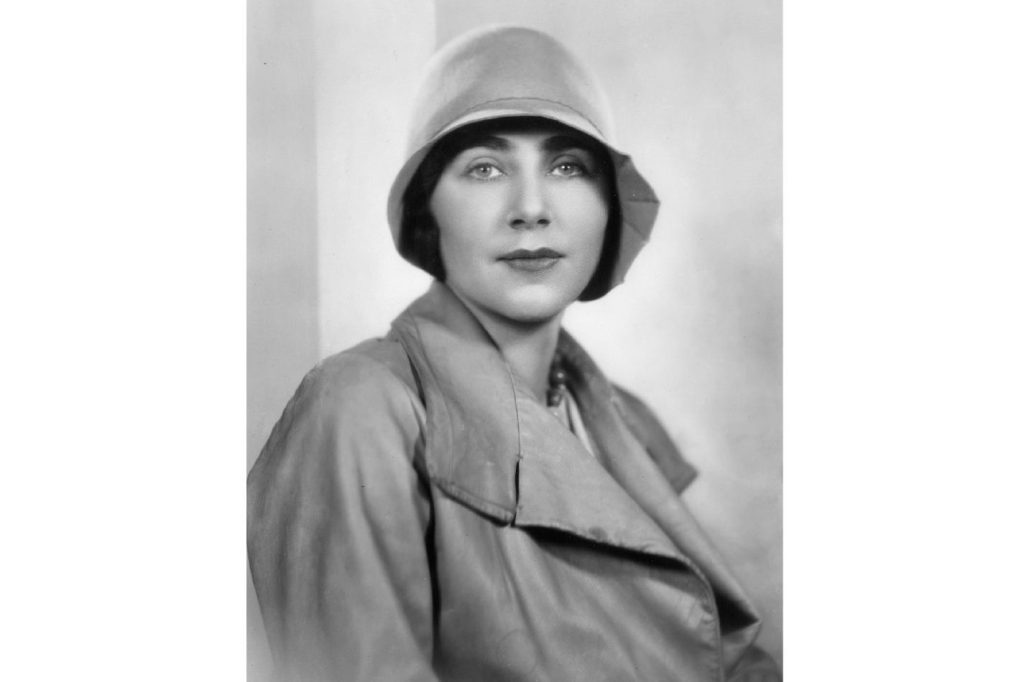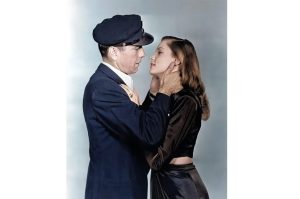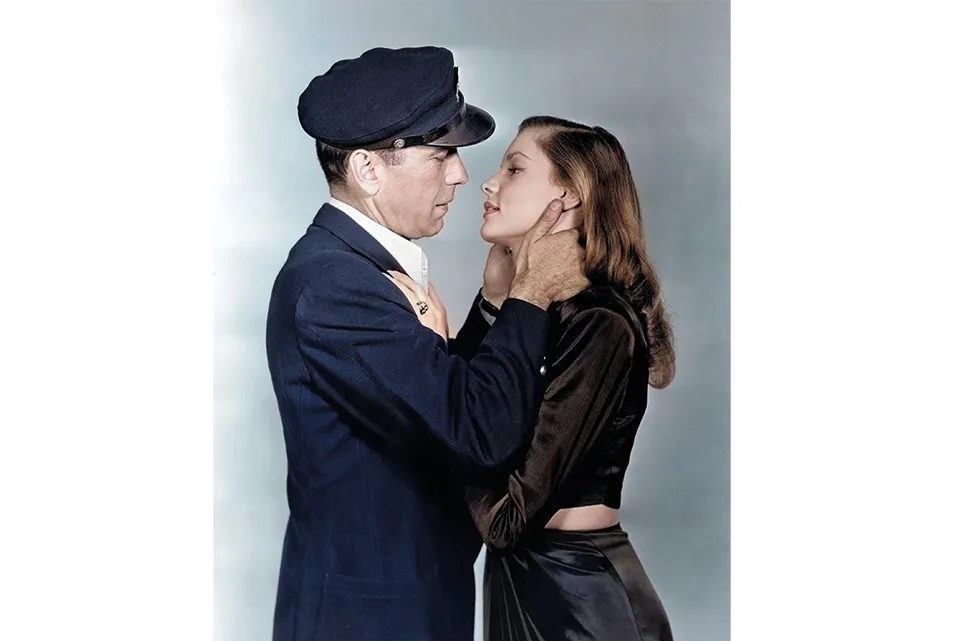“Going to the pictures is nothing to be ashamed of,” insisted the film writer Iris Barry in 1926. But it certainly wasn’t something to be proud of, either. To the cultural cognoscenti of the 1920s, Barry admitted, the cinema was barely an art at all — about as aesthetically significant as “passport photography.” And for much of polite society, seeing a film was done in secret, if at all.
So it was a considerable boost for the fledgling medium when, 100 years ago, the word “cinema” began to appear for the first time in this country above its own regular column, with its own dedicated critic, in the arts pages of The Spectator. Attending to this young art form was the even younger Barry. The twenty-eight-year-old was, according to Ivor Montagu, the “first film critic on a serious British journal.” At this stage it was not the dream job it would become. At its heart was an impossible task: to cajole readers to reckon with an ill-bred, upstart endeavor.
Spectator readers were given a ringside seat to a period of technological transformation
Silent cinema was considered vulgar, childish, simple-minded — the bastard offspring of the circus arts. That it was also obscenely popular — the British were spending as much on films in 1916 “as on all other plays, shows, concerts and organized sports events put together,” according to Picture Palace News — made it all the more reprehensible. Barry spent half her first column in February 1924 pleading with Britons to take it more seriously: “In Germany and Austria… they have realized that cinematography is no mere animated photography, but a new popular art-form with its own conventions, not yet defined, its own canon and standards… British producers would do well seriously to study… the Continental school.”
These conventions and standards were by and large being constructed in real time by Barry herself. Read her articles for The Spectator, and later for the Daily Mail, and you see an art form being strapped into nappies, fed, taught to waddle and talk.
Moving pictures had existed since 1888, when two top-hatted gents and a couple of ladies in round gowns had mysteriously decided to tramp about a garden in a suburb of Leeds while a French inventor, Louis Le Prince, pointed his boxy, single-lens camera at them for precisely 1.66 seconds. But cinema, as an aesthetic body of work with principles and aims and ambitions that could be explored, not just technically, but also intellectually, was non-existent. Barry would change all this.
She had been hired by John Strachey, a future member of Clement Attlee’s cabinet and an early film enthusiast, who convinced his father, the proprietor of The Spectator, that the magazine should be taking stock of this new craze. For her part, Barry had fallen for films years earlier, first under the guidance of Ezra Pound, then while shacked up with her on-off lover, the feral artist Wyndham Lewis, who, wanting her out of the house, encouraged her to visit the fleapit cinemas of Bloomsbury. (Their relationship was less than romantic: returning from hospital after giving birth to their second child, Barry was forced to wait at the door for Lewis to finish having sex with his latest squeeze, Nancy Cunard.)
Still, it meant that by 1920, Barry was wolfing down eight films a week. It held her in good stead. Her columns were knowledgeable, curious and had the combative energy of someone who was confident of their own authority. “I took my responsibilities as weightily as the late Ghandi,” she recalled. Her taste was, in retrospect, impeccable. Run your finger down the list of films she proclaimed remarkable — Cabiria, The Birth of a Nation, Intolerance, The Cabinet of Dr Caligari, The Gold Rush, The Last Laugh, Destiny, Metropolis, Greed — and you’re looking at what we now think of as the cinematic canon. Her gods — Griffiths, Murnau, Lang, Chaplin, Pabst, Lubitsch, Flaherty, von Stroheim, Ford — are our gods. In 1926, she crowned a future great after catching his debut: “Alfred Hitchcock has astonished everyone with his freshness and power in his first picture The Pleasure Garden.”
Spectator readers, meanwhile, were given a ringside seat to a period of technological transformation: “I have just been to a demonstration of what are generally called ‘talking films,’” Barry reported in June 1924. She wrote excitedly of “fascinating nature films about ants, and slow-motion pictures of swimming-champions” and the opening of some “magnificent” new studios in Hertfordshire in 1925 — what would soon be known as Elstree. In 1926, she witnessed the birth of Felix the Cat and raved about the dawn of Technicolor in Douglas Fairbanks’s The Black Pirate, “the first in which photographic tone and color have worked together successfully. Blood is blood in this picture!”
All the time she thirsted for “continuous experiment.” German movies, which she claimed had “given cinema a soul,” were a particular obsession. As was a strong antipathy to the idea that films “made to please a vast and undifferentiated public… must necessarily be vulgar and cheap. It is not true.” During the première of Lang’s Die Nibelungen at the Royal Albert Hall, she saw audiences “moved every evening to applaud, not emotional acting, but pictures.”
Barry partied with Disney, yachted with Picasso, hung out with Chaplin
Uniquely a groupie of both the avant-garde around Pound and the rival Bloomsbury Set, and increasingly close to Hollywood, Barry always had great gossip. “Goldwyn… has come over from America with the remarkable hope of persuading Sigmund Freud to join him in Los Angeles in order that they may co-operate in producing a film,” she announced at the end of her January 1925 column.
In February of the same year, she appears to ventriloquize the future theorists of the French New Wave, succinctly laying out, thirty years ahead of anyone else, the fundamentals of what would be called “auteur theory:”
“It is to [Chaplin] and to Ernst Lubitsch that we owe the growing realization that if a film, of no matter what type, is to be worthwhile, it must be entirely dominated by the will of one man and one man only — the director. A film is made up of so many ingredients, prepared over so large an area and so long a space of time that it must be controlled by that one man as absolutely as an orchestra is by the man with the baton. And film-stars, instead of attempting to allure the public, must subordinate their own personalities to the parts they play. Indeed, it would be ideal if they could remain as anonymous as are the violins and ‘cellos, the drums and horns in even the best orchestras.’”
What was remarkable for a critic who was charting a path on her own was her commitment to the boldest of the bold: “It is on the commercially unsuccessful but original pictures that the very continuance of the cinema really depends.” Her adventurousness set her at odds with the conservatism of British cinema. In the summer of 1925, she urged us “to face the fact that our films are bad; that they are nearly all boring, poorly conceived, wretchedly directed, hopelessly acted, and abominably photographed and titled.”
Her demand that the British film industry buck up its ideas attracted the attention of Lord Rothermere, who poached her for the Daily Mail. Not unlike with TikTok — another wildly popular, upstart medium — the elites were suddenly taking notice of moving pictures, alarmed by the public’s obsession with them and by how many of the most alluring ones were being produced by foreigners. The hopeless lack of improvement to the nation’s cinema, however, and Barry’s inability to lie led to her being fired a few years later.
For film to start being treated like a fine art, Barry realized, it had to start behaving like a fine art. So Barry began dating films, “like wine,” and wrote one of the earliest books on the aesthetics of cinema, Let’s Go to the Pictures (1926). She started shaping a canon, with Griffiths at the apex. In 1925, she set up a precursor to the BFI to revive “the best films of all kinds.”
The hugely influential London Film Society — with H.G. Wells, G.B. Shaw, J.M. Keynes and Roger Fry among its founding members — screened movies that had fallen foul of the censors or the commercial demands of the box office. They had to smuggle Dali and Buñuel’s L’Age d’Or from France in Cunard’s hatbox.
In the 1930s, she cracked America and set up a film department at the Museum of Modern Art in New York, which she filled with nitrate stock collected from libraries across Europe, saving numerous masterpieces from the Luftwaffe and RAF. She even convinced hard-nosed Hollywood to start preserving its history and handing over its treasures. She partied with Disney, yachted with Picasso, hung out with Chaplin. In Moscow, she got Sergei Eisenstein to cough up some scripts. In Cannes — where she served on the jury of the city’s first film festival in 1946 — she romped with Jean Renoir and Leslie Caron.
Barry’s life was a film. The daughter of Madame Pandora, a fortune-telling gypsy from Birmingham, she had worked as a typist for Winston Churchill in the first world war; as an illegal distributor of Joyce’s Ulysses; was kidnapped at gunpoint by Corsican mafia on the French Riviera and ended her days living with a smuggler of olive oil.
“Though the moving picture has affinities with the respectable muses, it is a substitute for none of them, but one of the phenomena for which our age will be remembered,” she wrote in these pages in 1925. Not many would have believed her. Yet by the time she had died in 1969, to even suggest that cinema might not be one of the arts would have struck most people as preposterous. The moving pictures had finally earned a place among the respectable muses — for which we have Barry to thank.
This article was originally published in The Spectator’s UK magazine. Subscribe to the World edition here.






















Leave a Reply